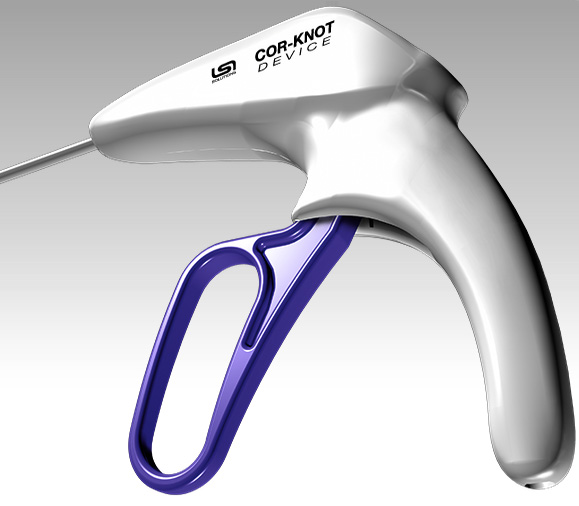- Comparison of Strength, Consistency and Speed of Manually-Tied Knots vs. Automated Titanium Fasteners in an Ex-vivo Minimally Invasive Mitral Ring Model Using a New Micro- Transducer Pressure Analysis System.
Candice Y. Lee, University of Rochester Medical Center, 2013.
- Clinical Outcomes of Patients More Than One Year after Minimally Invasive Mitral Valve Repair. and Replacement Surgery with Sutures Secured using Automated Titanium Fasteners.
Roberto Rodriguez, Lankenau Medical Center, 2013.
- Significant Reduction in Operative Times Using Cor-Knot™ In Robot-Assisted Mitral Valve Repair.
- Wiley Nifong, East Carolina Heart Institute,2013.
- Titanium Fasteners in Open Aortic Valve Replacement Surgery: Effective and Significant Savings Candice Y. Lee, MD, University of Rochester Medical Center,2014.
- A new pressure mapping system towards optimizing cardiac prosthetic attachment.
A.J. Martellaro, University of Rochester Medical Center,2014.
- New Knot Tying Technique for Minimally Invasive approach to Mitral Valve Repair.
- Rodriguez, Lankenau medical center, 2014.
- Facilitating Technology for Knot Tying During Minimally Invasive Mitral Valve Repair.
Scott Goldman, Lankenau Medical Center, 2014.
- Facilitating implantation of Neochordae for Complex Mitral Valve Repair with the Minimally Invasive Right Thoracotomy Approach: 2 Years Follow-Up.
Steven Jin, Riverside Community Hospital, 2014.
- The Cor-Knot Device May Serve as an Ideal Radiopaque Marker of the Annular Plane for Future Valve-in-Valve Implantation.
Martin Czerny, Department of Cardiovascular Surgery, University Hospital Zurich, 2014.
- Robotically assisted minimally invasive mitral valve surgery.
Kaushik Mandal, Division of Cardiac Surgery, Johns Hopkins University School of Medicine, 2014.

